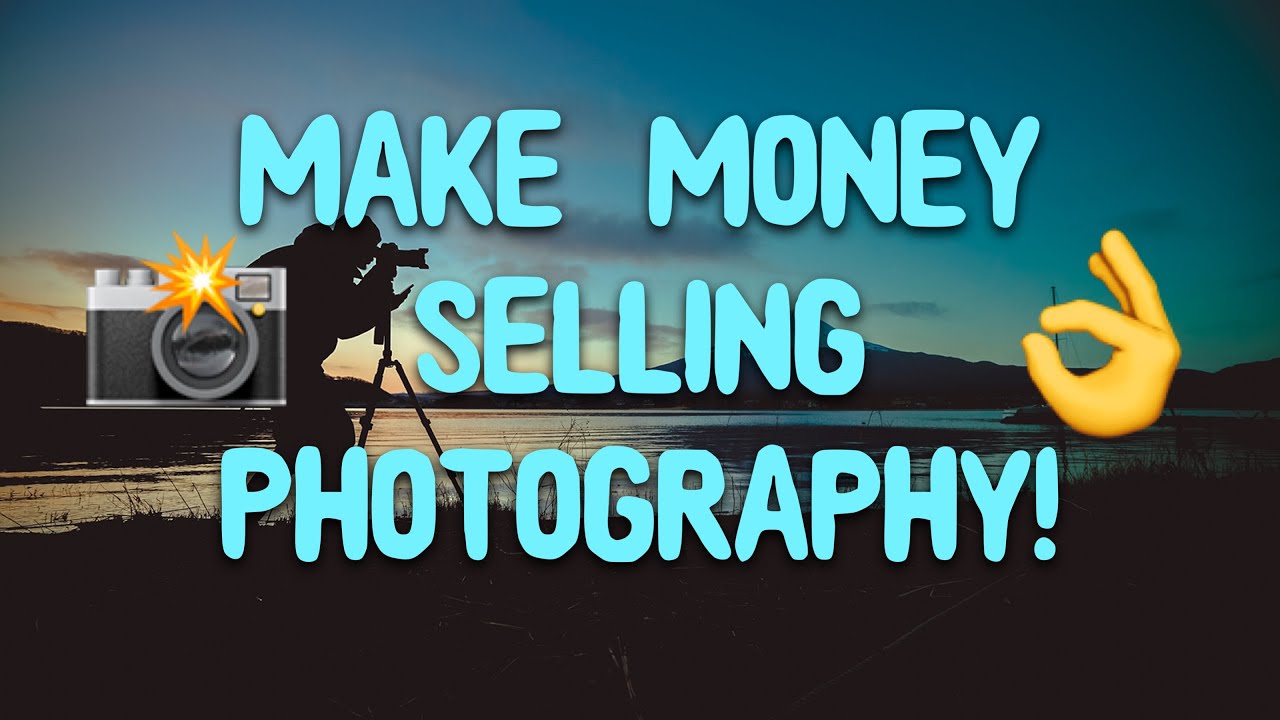Thinking about turning your photography or design skills into a steady income? Shutterstock is a fantastic platform that allows creators like you to showcase your work and earn money every time someone downloads your images, videos, or vectors. Even if you have a small portfolio, you can still make a significant impact and generate income. In this guide, we’ll explore how you can leverage Shutterstock‘s platform effectively, even with limited content, and start turning your creative efforts into real earnings. Let’s dive into what makes
Understanding Shutterstock’s Platform and Revenue Model

Shutterstock is one of the largest and most popular stock content platforms in the world. It connects creators with millions of buyers seeking high-quality images, videos, and illustrations for various projects—be it commercial, editorial, or personal use. The platform operates on a straightforward revenue model that benefits both contributors and buyers, making it accessible even for those just starting out.
Here’s a quick overview of how it works:
- Content Submission: You upload your images, videos, or vectors to Shutterstock. The platform reviews your submissions to ensure they meet quality standards.
- Licensing and Sales: Once approved, your content is available for licensing. Buyers can purchase downloads for their projects, and you earn a commission each time your work is licensed.
- Royalty Structure: Shutterstock operates on a tiered royalty system, meaning the more you sell, the higher your percentage of earnings per sale. Initially, new contributors earn around 15-30% per download, but this can increase as you sell more and meet certain milestones.
What’s great about Shutterstock is that even with a small portfolio, you can start earning. The key is quality over quantity—if your few images are unique and high-quality, they can attract buyers and generate sales. Additionally, Shutterstock offers various tools and analytics to help you track your earnings and optimize your portfolio for better sales.
So, whether you’re a hobbyist photographer or a designer with a handful of images, Shutterstock provides a platform where your work can reach a global audience. The next step is understanding how the platform functions behind the scenes, so you can make the most of your small portfolio and maximize your earnings.
Strategies for Growing Your Small Portfolio Effectively

Starting with a small portfolio can feel like climbing a mountain, but don’t worry—there are smart strategies to help you grow steadily and confidently. The key is to focus on quality, consistency, and understanding what buyers are really looking for. Let’s dive into some effective ways to expand your collection without feeling overwhelmed.
First, prioritize quality over quantity. Instead of rushing to upload as many images or videos as possible, take your time to perfect each piece. High-quality, well-composed content tends to attract more buyers and earns better royalties. Remember, a few stunning shots are more valuable than dozens of mediocre ones.
Next, diversify your content. A small portfolio can benefit from a variety of themes and styles. Think about what’s trending or in demand—like business, lifestyle, nature, or technology—and add different angles to your portfolio. This not only broadens your appeal but also increases the chances of your work being licensed.
Leverage keyword optimization. Use relevant, specific keywords for each image or video. Think about what buyers might search for—be descriptive and precise. Proper tagging makes your content more discoverable, especially when you’re just starting out.
Consistent uploading schedule can also boost your growth. Set a manageable goal—say, 2-3 new pieces a week—and stick to it. Regular uploads keep your portfolio active and signal to Shutterstock that you’re a committed contributor, which can improve your visibility.
Engage with the community on Shutterstock forums or social media groups. Sharing tips, asking questions, or getting feedback can inspire new ideas and help you learn from others’ experiences. Sometimes, collaborations or insights from seasoned contributors can give you that extra edge.
Lastly, keep an eye on your analytics. Shutterstock provides data on what’s performing well. Use this info to guide your future creations—if certain themes or styles are popular, consider focusing more on those areas. It’s all about working smarter, not just harder, to grow your small but mighty portfolio.
Tips for Creating High-Quality and Marketable Content

Creating content that sells is both an art and a science. The goal is to produce images, videos, or illustrations that are not only visually appealing but also highly marketable. Here are some practical tips to help you craft content that stands out and attracts buyers:
- Focus on sharpness and clarity: Blurry or poorly lit images rarely sell. Use good lighting, stable shots, and proper focus to ensure your content looks professional and crisp.
- Emphasize composition: Follow basic principles like the rule of thirds, leading lines, and balanced framing. Thoughtful composition makes your content more engaging and visually pleasing.
- Stay current with trends: Check what types of visuals are trending on Shutterstock and other stock platforms. Incorporate popular themes like remote work, sustainability, or health and wellness to increase your content’s relevance.
- Capture authentic moments: Genuine expressions, candid photos, and real-life scenarios often resonate more with buyers than overly staged shots. Authenticity can make your content more relatable and marketable.
- Optimize for versatility: Create images and videos that can be used in multiple contexts. For example, photos with neutral backgrounds or simple setups can fit various projects, increasing their demand.
- Mind the technical specs: Follow Shutterstock’s guidelines regarding resolution, aspect ratio, and file format. High-resolution files ensure your content looks good on all devices and print projects.
- Tell a story or evoke emotion: Content that communicates a clear message or stirs feelings tends to perform well. Whether it’s joy, hope, or professionalism, emotional appeal enhances marketability.
- Don’t forget diversity and inclusivity: Featuring diverse subjects, cultures, and scenarios broadens your reach and appeals to a wider audience.
Remember, every piece of content you create is an opportunity to connect with someone’s project or idea. Keep honing your skills, stay inspired, and always consider what your potential buyers might need. With high-quality, market-ready content, even a small portfolio can generate a steady stream of income on Shutterstock.
Optimizing Your Image Titles and Tags for Better Visibility
Alright, let’s talk about something that might sound a bit technical but is actually super important—optimizing your image titles and tags. Think of it like giving your photos a little boost so they’re easier to find when someone searches on Shutterstock. The better your titles and tags, the more likely your images will appear in relevant searches, which means more eyes on your work—and hopefully, more sales!
First off, titles should be clear, descriptive, and straightforward. Instead of something vague like “Beautiful Sunset,” try “Golden Sunset over Mountain Range at Dusk.” This helps buyers know exactly what they’re getting and improves your chances of matching their search queries.
When it comes to tags, be specific and relevant. Use keywords that describe the main elements of your image, such as the subject, setting, mood, colors, and style. For example, if your photo features a smiling woman in a park, your tags could include:
- woman
- park
- smiling
- outdoor
- summer
- happy
- nature
Remember, you can add up to 50 tags, so take advantage of that! But avoid stuffing irrelevant keywords—that can hurt your ranking. Instead, think like a buyer: what might someone search for if they’re looking for an image like yours?
Another tip is to research trending keywords or popular search terms in your niche. You can do this by looking at top-selling images similar to yours or using tools like Google Keyword Planner or Shutterstock’s own search suggestions. Incorporating trending and high-traffic keywords can significantly boost your image’s visibility.
Finally, consistency is key. Regularly update your titles and tags based on what’s trending and what’s working. Over time, you’ll get a feel for what keywords attract more views and sales, helping you optimize your portfolio effectively—even if it’s small!
Leveraging Trends and Niche Markets to Increase Sales
Having a small portfolio doesn’t mean you’re out of the game. In fact, focusing on trends and niche markets can be a game-changer. It’s all about pinpointing specific areas where demand is high and your unique style can shine. Let’s dive into how you can leverage these opportunities to boost your earnings on Shutterstock.
Why focus on trends? Because they often drive a surge in searches and sales. For example, if you notice that minimalist design, eco-friendly themes, or remote work setups are trending, creating images around these topics can give you an edge. Keep an eye on:
- Current fashion and design trends
- Seasonal themes (holidays, back-to-school, etc.)
- Popular topics in news and social media
- Emerging industries or technologies
Niche markets are your secret weapon. Instead of trying to cover everything, master a specific subject area where competition might be less fierce. For example, instead of general travel photos, focus on niche travel themes like eco-tourism or adventure sports. Or, if you’re into food photography, specialize in plant-based dishes or regional cuisines.
Here’s how to leverage trends and niches effectively:
- Research demand: Use Shutterstock’s search bar, trending hashtags, or even social media to see what people are searching for.
- Create targeted content: Develop images that directly address current trends or niche interests. The more relevant, the better.
- Stay updated: Follow industry blogs, design platforms, and social media influencers to spot emerging trends early.
- Build expertise: Becoming known for a specific niche can make your work stand out. Buyers looking for specialized images will come to you.
By combining trend-awareness with niche specialization, you can maximize your small portfolio’s potential. It’s all about strategic creation—focusing your limited resources on what’s hot and what you excel at. Over time, this approach can lead to a loyal customer base and consistent sales, even if you don’t have hundreds of images.
Remember, quality beats quantity. Small, well-targeted portfolios that tap into current trends and niche markets often outperform larger, more generic collections. So, stay sharp, stay focused, and keep creating images that meet market demands!
Maximizing Earnings with Multiple Licensing Options
One of the great things about Shutterstock is that it offers different licensing options for your images, giving you multiple ways to earn from a single piece of work. Understanding these options and how to leverage them can significantly boost your income, especially when you have a smaller portfolio. So, let’s dive into what these licenses mean and how you can use them to your advantage.
Standard License is the most common and is suitable for most uses—websites, social media, presentations, and small printed materials. It’s a straightforward license that limits the number of copies or views but is perfect for many clients.
Then there’s the Extended License, which provides more flexibility. With this, your clients can use your images for larger print runs, merchandise, or products that will be sold. This license tends to be more expensive, but it also means higher payouts for you.
How can you maximize earnings? Here are some tips:
- Offer your images under both licenses when possible. If your content has the potential for commercial use or large-scale printing, consider indicating that it’s available for extended licensing.
- Use descriptive keywords and clear licensing information. Make it easy for buyers to find the right license for their needs, encouraging them to select the higher-value options.
- Create versatile images. Photos that can be used in multiple contexts—like business, lifestyle, or creative projects—are more likely to be licensed multiple times under different terms.
- Educate your clients. Sometimes, buyers aren’t aware of the licensing options available. Including a brief note or FAQ about licensing can help guide them toward purchasing the most suitable and profitable license.
Another tip is to keep an eye on trending topics and high-demand categories, as licensing fees can vary based on the content’s relevance and exclusivity. By strategically tagging your images with relevant keywords and offering different licensing options, you can unlock multiple revenue streams from a handful of well-chosen images.
Monitoring Your Portfolio Performance and Adjusting Your Strategy
Having a small portfolio doesn’t mean you can’t grow your earnings—what matters is how well you understand what’s working and what’s not. Regularly monitoring your portfolio’s performance helps you make smarter decisions about which images to promote, update, or remove. Think of it as giving your Shutterstock business a health check-up every now and then.
Start by reviewing your dashboard analytics. Shutterstock provides valuable data such as:
- Number of views: Shows which images are catching buyers’ attention.
- Number of downloads: Indicates what content is actually being purchased.
- Earnings per image: Helps you identify your top performers.
Pay attention to patterns—are certain themes, styles, or subjects consistently performing well? Or are some images getting lots of views but few downloads? If it’s the latter, consider updating your tags, improving the image quality, or replacing underperforming images with fresh content.
Adjusting your strategy could involve:
- Focusing on high-demand niches. If you notice your landscape photos sell well, try creating more in that category.
- Refreshing older images. Update keywords, add new tags, or slightly edit images to make them more appealing.
- Adding new content based on trends. Follow industry news, seasonal events, or popular themes to keep your portfolio relevant.
- Testing different licensing options. See which licenses your buyers prefer and adjust your offerings accordingly.
Remember, consistency is key. Regularly reviewing your performance metrics and being willing to adapt your approach can turn a small portfolio into a steady income source. Keep learning, experimenting, and optimizing, and you’ll find that even a modest collection of images can generate meaningful earnings over time.
Additional Tips for New Contributors on Shutterstock
Starting your journey as a Shutterstock contributor can feel a bit overwhelming at first, especially if you’re working with a small portfolio. But don’t worry — there are plenty of ways to maximize your efforts and get noticed. Here are some extra tips to help you make the most of your small collection of images:
Focus on Niche Topics: Instead of trying to cover everything, hone in on a specific niche that you’re passionate about or knowledgeable in. Whether it’s minimalist graphic designs, pet photography, or nature shots from your local area, niche content often faces less competition and attracts a dedicated audience.
Optimize Your Keywords: Keywords are your best friends on Shutterstock. Use relevant, specific, and descriptive keywords for each image. Think about what someone might search for when looking for that particular photo or graphic. Avoid generic tags and instead, include details like color, mood, and subject specifics.
Update and Refresh Your Portfolio: Keep an eye on trending topics or seasonal themes. Adding new images regularly, especially around holidays or current events, can boost your visibility. Even small updates can lead to more downloads and higher earnings over time.
Engage with the Community: Participate in Shutterstock forums or social media groups for contributors. Sharing experiences, asking questions, and learning from others can provide valuable insights and motivation. Sometimes, others’ feedback can help you improve your submissions.
| Tip | Why It Matters |
|---|---|
| Specialize in a niche | Less competition and a loyal audience |
| Use precise keywords | Increases discoverability |
| Regularly update content | Stays relevant and boosts visibility |
| Engage with community | Gathers support and new ideas |
Remember, patience is key. Growing your portfolio takes time, but with consistent effort and smart strategies, even a small collection can lead to steady income. Focus on quality over quantity, and don’t be discouraged if your images don’t sell immediately. Every download is a step toward building your presence on Shutterstock!
Conclusion: Building Success on Shutterstock with Limited Content
So, you’ve started with a small portfolio on Shutterstock, and maybe you’re wondering if it’s worth the effort. The good news is, absolutely! Success on stock photography platforms doesn’t necessarily depend on having hundreds of images. Instead, it’s about strategic choices, quality, and persistence.
By focusing on your niche, optimizing your keywords, and consistently adding fresh content, you can gradually increase your visibility and earnings. Remember, many top contributors started small and built their portfolios over time. Think of your small collection as your foundation — a starting point that you can expand upon as you learn what works best.
Patience and dedication are your best allies here. Keep learning, experimenting, and engaging with the community. Over time, your small but carefully curated portfolio can become a valuable asset that generates a steady income. The key is to stay motivated and keep improving your craft. Success on Shutterstock, even with limited content, is entirely achievable with the right mindset and approach.
Happy uploading, and here’s to building your creative income one image at a time!


